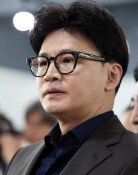Daegu, Osong Selected as Medical Cluster Sites
Daegu, Osong Selected as Medical Cluster Sites
Posted August. 11, 2009 08:25,
Shinseo Innovative City in Daegu and Osong Life Science Complex in North Chungcheong Province yesterday were selected as the sites for cutting-edge medical complexes.
The government officially selected the two candidate areas at the fifth cutting-edge medical complex committee chaired by Prime Minister Han Seung-soo.
By 2012, the two regions will each get a research complex spanning a million square meters to develop new drugs, a research support center to produce cutting-edge medical devices, and a cutting-edge clinical test facility.
The committee said, Given that the two regions are strong in different sectors Osong in the bio industry and Daegu in medical devices, new medicine, and medical services we selected them in that they can greatly contribute to the advancement of the domestic medical industry and balanced national development if they can maintain a complementary relationship and sharpen their strengths.
An adjustment is expected in the planned investment of 5.6 trillion won (4.56 billion U.S. dollars): two trillion won (1.63 billion dollars) from the central government, 300 billion won (244 million dollars) from provincial and municipal governments, and 3.3 trillion won (2.69 billion dollars) from the private sector.
The investment will come over the next 30 years.
Shinseo Innovative City got the highest grade of A since it is closely linked with leading medical institutions such as Daegu Catholic University Medical Center and Kyungpook National University Hospital.
The Osong complex was selected among the top three candidates that got B grades: New Gwanggyo City in Gyeonggi Province; Wonju in Gangwon Province; and Osong in North Chungcheong Province. The government cited Osongs state-run agencies and biotechnology companies for their synergy effect and good transportation access.
The project is expected to generate 45 trillion won (36.6 billion dollars) in the medical industry and 37.2 trillion won (30.3 billion dollars) in spillover effects, as well as a generating effect of 82.2 trillion won (66.9 billion dollars) in production and the creation of 382,000 jobs.
Since the government abruptly changed its plan to pick one place and develop it from the center outward, experts say it made a compromise to reflect regional sentiment and political stances by selecting two regions instead.
Health, Welfare and Family Affairs Minister Jean Jae-hee said, We will immediately complete the process for the selected regions and create detailed plans for each complex and financing methods this year to complete the complex by 2012.
We will closely cooperate with related government agencies, provincial authorities and think tanks to help effective management of the cutting-edge medical complexes.
likeday@donga.com



![[단독]김경 “1억원 줄때, 강선우도 함께 있었다” 자수서](https://dimg.donga.com/c/138/175/90/1/wps/NEWS/IMAGE/2026/01/14/133148772.5.jpg)

![반찬통 착색 고민 끝…‘두부용기’ 버리지 말고 이렇게 쓰세요 [알쓸톡]](https://dimg.donga.com/c/138/175/90/1/wps/NEWS/IMAGE/2026/01/09/133126593.3.png)

